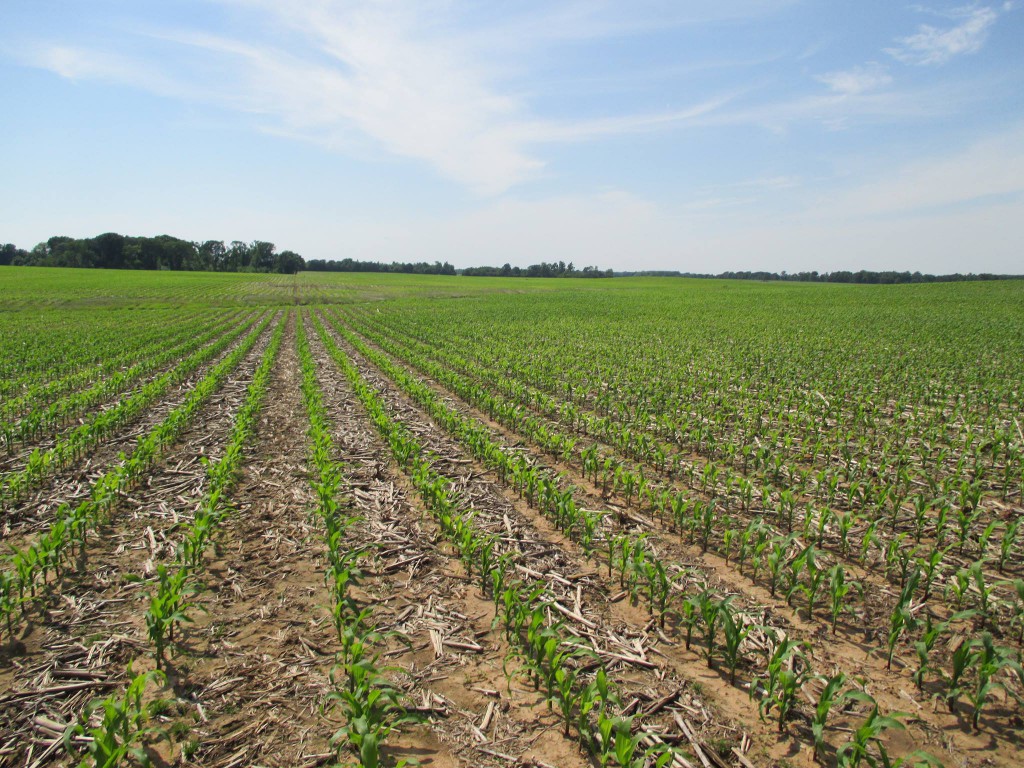By Wesley Porter, Luke Fuhrer, and Sarah Beth Thompson
It is that time of year, when we are defoliating cotton and moving very rapidly into harvest. On most of our new cotton harvesters there is incorporated on-board module weighing systems and, in many cases, yield monitors. While I am putting this into a Blog Post for ease of access, we recently (8/3/2025), published a fact sheet. Feel free to use either for your reference.
To see full publication click the button below!
Thus, the main goal of this post is to describe how to calibrate the handler weighing system and onboard yield monitor on a John Deere round module building cotton picker. While all of the graphics displayed here are from a CP 770 model, the procedures described apply to models 7760, CP/CS 690, and CS 770, and there are only minor differences among them in the screen graphics or icons. By following these steps, operators can ensure accurate module weight records and use this data to calibrate the onboard yield monitor. With both systems calibrated, growers can trust the data from the machine and use it for future management decisions.
The introduction of John Deere’s round module cotton pickers and strippers has brought new data insights, operational efficiencies, and cost savings to the cotton harvest process. These model pickers have quickly gained popularity, reflected in the shift away from traditional modules on cotton gin yards throughout the Cotton Belt. With advanced sensors, technology, and capabilities, round module pickers require more maintenance and calibration than their basket cotton picker predecessors. Although these additional steps require time and resources, they ensure accurate readings and optimal machine performance. This publication focuses on calibration procedures for the module handler and yield monitor systems and does not discuss calibration routines for other systems on the harvester.
Handler Calibration Steps
Recommended calibration frequency: Once per season to ensure accurate module weights.
- Start up the machine and allow the hydraulic oil to reach operating temperature. Also, raise and lower the handler a few times to ensure the system contains hydraulic oil at operating temperature prior to calibration. Ensure that the accumulator is empty, no objects are below the handler area, and the machine is at low idle.
- In the cab, select the “Calibrations & Procedures” button on the machine settings screen (marked with a red box in the photo).

3. On the “Calibrations & Procedures” screen, use the drop-down menu to select “Round Module Weighing Calibration.”

4. Initiate the round module weighing calibration procedure by pushing the “Calibrate” button when you are ready.

5. Leave the cab and safely move to the side of the machine. Locate the handler tether and stand clear of the handler area for safety. Ensure there is no one in the cab or on the machine while you are performing this procedure.

6. Press and hold the “D” button on the tether throughout the entire calibration process.

7. The handler will automatically go through the following positions: Storage > Carry > Lower > Carry > Float > Carry > Storage.
Yield Monitor Calibration Steps
Recommended calibration frequency: Once per season to ensure accurate yield measurements.
Yield monitor calibration can be done after completing the handler calibration.
1. Start up the machine, ensuring the accumulator is empty.
2. In the cab, select the “Calibrations & Procedures” button on the machine settings screen (marked with a red box in the photo).

3. On the “Calibrations & Procedures” screen, use the drop-down menu to select “Yield Calibration.”

4. Begin the yield calibration procedure by pushing the “Calibrate” button.

5. Begin harvesting cotton, creating a round module as usual. For best results, ensure the crop stand is as uniform as possible across all six rows.
6. After the module is wrapped and ejected to the handler, select the “HID Cotton Pro” button to find the recorded module weight.
7. Note or photograph this weight for reference and return to the “Yield Calibration” screen.
8. Using Equation 1, calculate the actual module weight from the handler weight. Input the actual module weight value into the monitor for the scale weight on the “Yield Calibration” screen.
9. Save the yield calibration.
A multistate study by Porter et al. (2022) used 686 modules (1,000–6,000 lb) across the Cotton Belt to develop the following correction equation for the handler weight system:
\[ \text{Actual Module Weight} = 0.9511 \times \text{handler weight } -\text{ }57.368 \]
This equation indicates a slight over-measurement by the handler. By applying this correction factor, growers can record accurate module weights.
